Last updated: June 4, 2020
Article
National Park Getaway: Buck Island Reef National Monument
By Meredith D. Hardy, Ph.D., Acting Chief of Interpretation, Christiansted National Historic Site
In celebration of National Caribbean Heritage Month, take a virtual trip to Buck Island Reef National Monument, or plan a trip for the future.
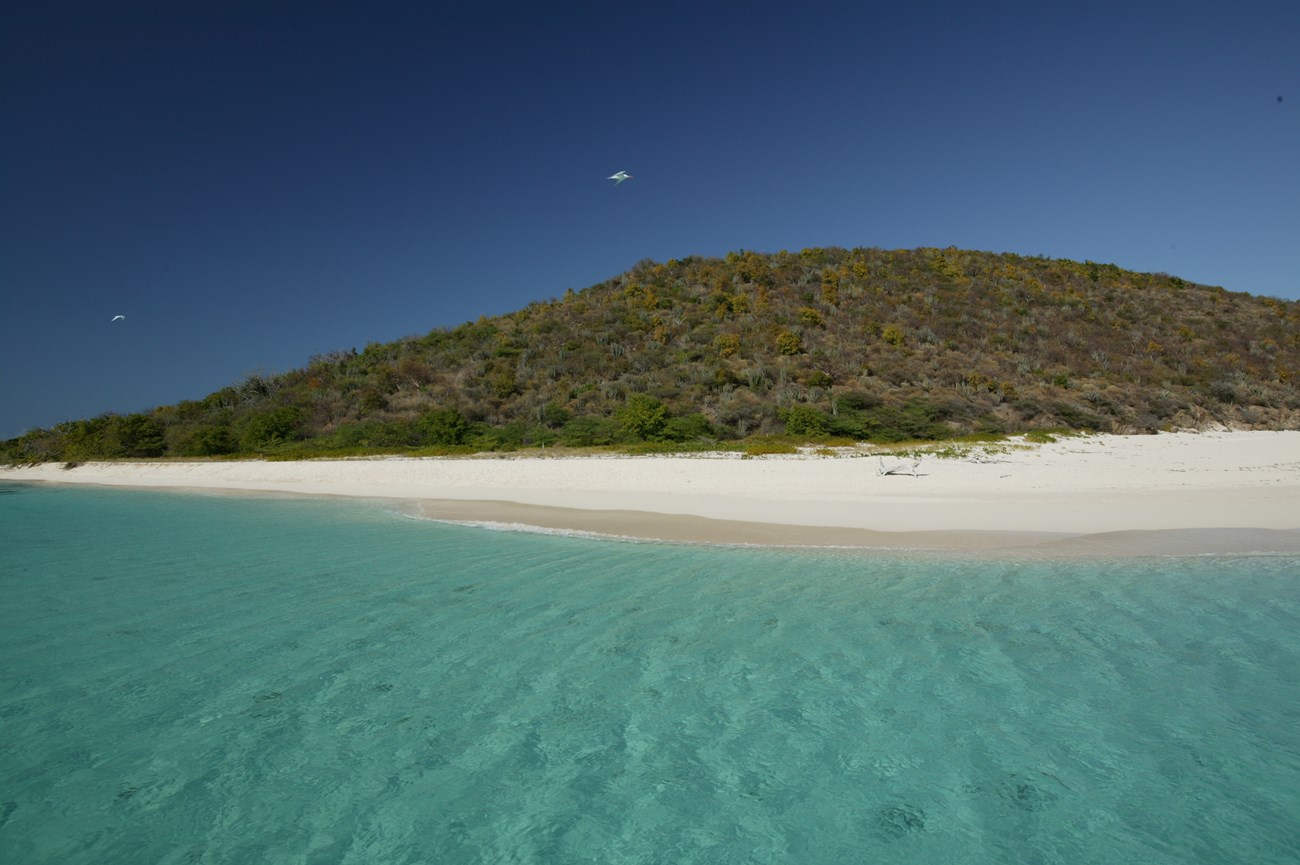
Digital Island / Sean Corsaut
Velkommen til St. Croix!
When you think of visiting “America’s Paradise,” what comes to mind? Sparkling clear waters? Coral reefs? Palm trees swaying the breeze? History? All of these and more can be found in Buck Island Reef National Monument in the US Virgin Islands.
Buck Island is a small uninhabited island located 1 ½ miles north of the island of St. Croix. While there are numerous islands of similar size and appearance in the Lesser Antilles, a group of islands in the Caribbean Sea, Buck Island has a distinctive feature that sets it apart—a magnificent elkhorn coral barrier reef. The exceptional and unique quality of this bank-barrier reef and its lagoon are noted throughout the Caribbean and has long been recognized. The Government of the Virgin Islands took control of Buck Island in 1936 and established the island and its coral reefs as a protected territorial park in 1948.
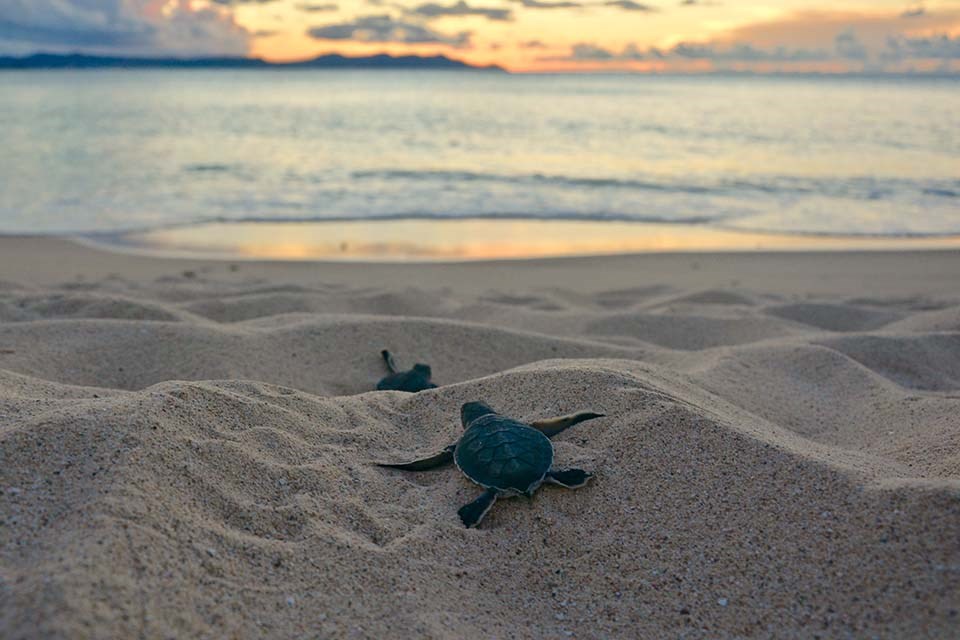
NPS Photo
Documentation by a young marine biologist, Dr. John Randall from the University of Miami, was influential in establishing Buck Island Reef National Monument as a part of the National Park System by presidential proclamation on December 5, 1961. The monument was created to recognize the area’s outstanding scientific, aesthetic, and educational importance and protect the island and the “adjoining shoals, rocks, and undersea coral reef formations” that compose “one of the finest marine gardens in the Caribbean Sea.”
For more than 50 years, the National Park Service has monitored the monument’s marine and terrestrial ecosystems and conducted and supported scientific research. Buck Island has one of the world’s most important beaches for nesting hawksbill sea turtles and also provides safe nesting for local and migratory species of birds, including brown pelicans and least terns. The elkhorn coral barrier reef that surrounds two-thirds of the island has survived hurricanes and diseases and maintains its dramatic coral formations, deep grottoes, diverse reef fishes, sea fans, and soft corals (or gorgonians).
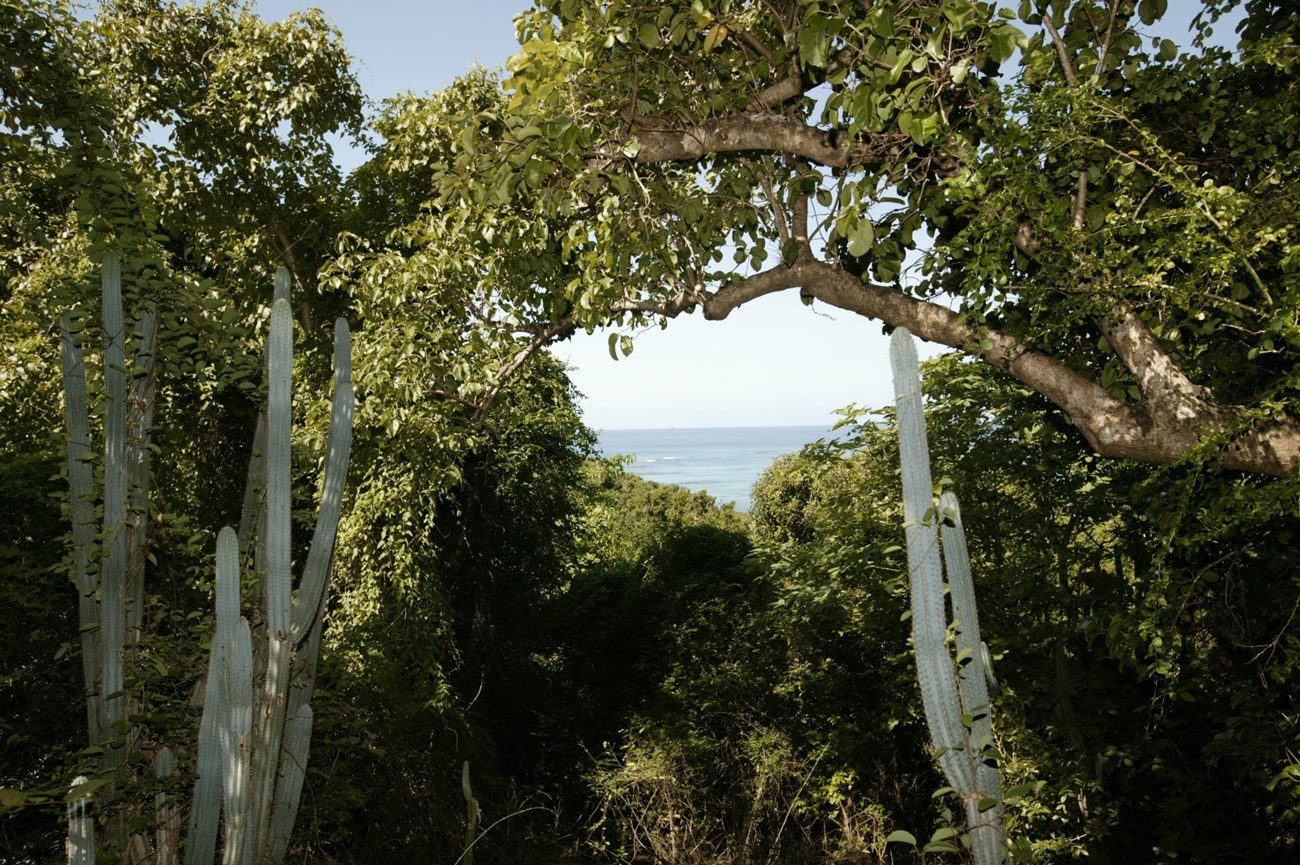
Digital Island / Sean Corsaut
Efforts have been made to reestablish native flora and fauna, including rare plants and animals native to St. Croix. The island’s coral sand beaches and tropical dry forests along shoreline host year-round sea turtle nesting. For more than 30 years, Buck Island’s Sea Turtle Research Program has studied endangered hawksbill and leatherback turtles and threatened green and loggerhead turtles that nest and forage within the monument.
Another one of the park’s success stories is the translocation of the endangered St. Croix ground lizard. In 2007, the National Park Service and federal and territorial partners moved 57 adult St. Croix ground lizards from Green Cay National Wildlife Refuge to Buck Island. The project’s success was largely due to the park’s efforts over the previous 20 years to remove nonnative predatory animals, like rats and mongoose, and exotic plants from Buck Island, providing a safe habit for the little lizards to thrive. Today there are more than 10,000 lizards on the island. If you are quiet, you may hear them move in the dried leaves or see their bright blue tails and bright pink faces.
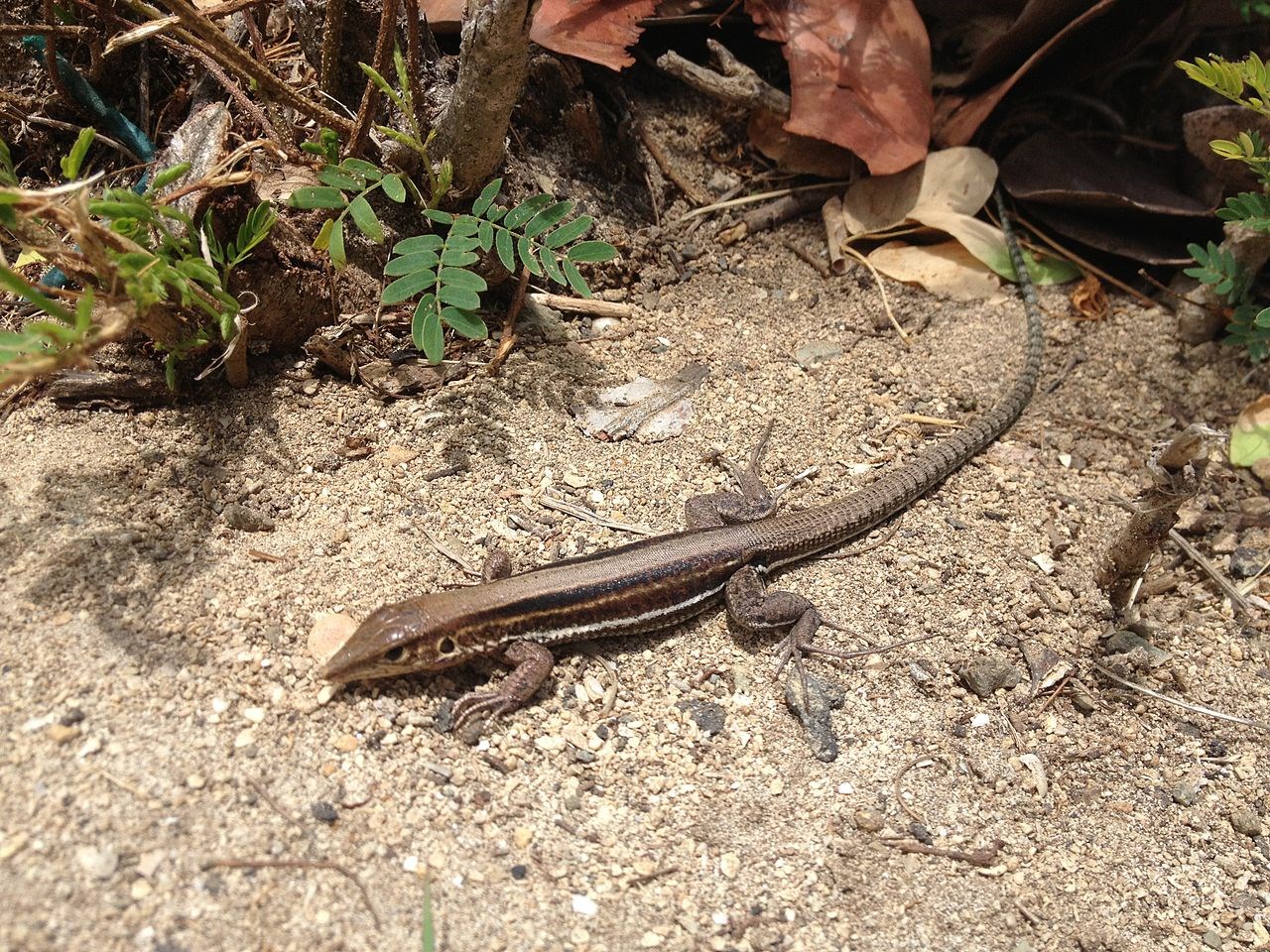
NPS Photo
Buck Island has been used by both prehistoric and historic peoples for its rich variety of marine fauna and terrestrial flora. People have come to Buck Island to enjoy the island’s beaches, waters, fish, and other wildlife for at least 2,000 years. In 1789, the Danish government built a signal station on the highest point of Buck Island. This station alerted the guards stationed at Fort Christiansvaern in Christiansted of arriving ships by raising a flag. Enslaved Africans from St. Croix were sent to Buck Island to harvest lignum vitae or ironwood trees, gather shellfish and lobsters, and tend goats that were released on the island to free range and forage.
Ships destined for the harbor at Christiansted or leaving for other ports had to navigate around Buck Island’s vase and shallow coral reefs and occasionally wrecked on them. In 2015, archeologists from the National Park Service’s Submerged Resources Center, and Southeast Archeological Center, in collaboration with the Smithsonian Institution’s National Museum of African American History and Culture and George Washington University, began locating and documenting archeological sites both above and under water associated with the historic trade of enslaved Africans. The team undertook a survey and inventory of the island’s submerged resources to look for two slave ships, the Mary and the General Abercrombie, that wrecked off its reefs in addition to any other archeological sites under the park’s waves. This survey was part of the park’s ongoing partnership with the Slave Wrecks Project, an international network of researchers and institutions that combines collaborative maritime exploration and investigation with training, heritage protection, exhibits, and education to build and share new knowledge about the history of the global slave trade.
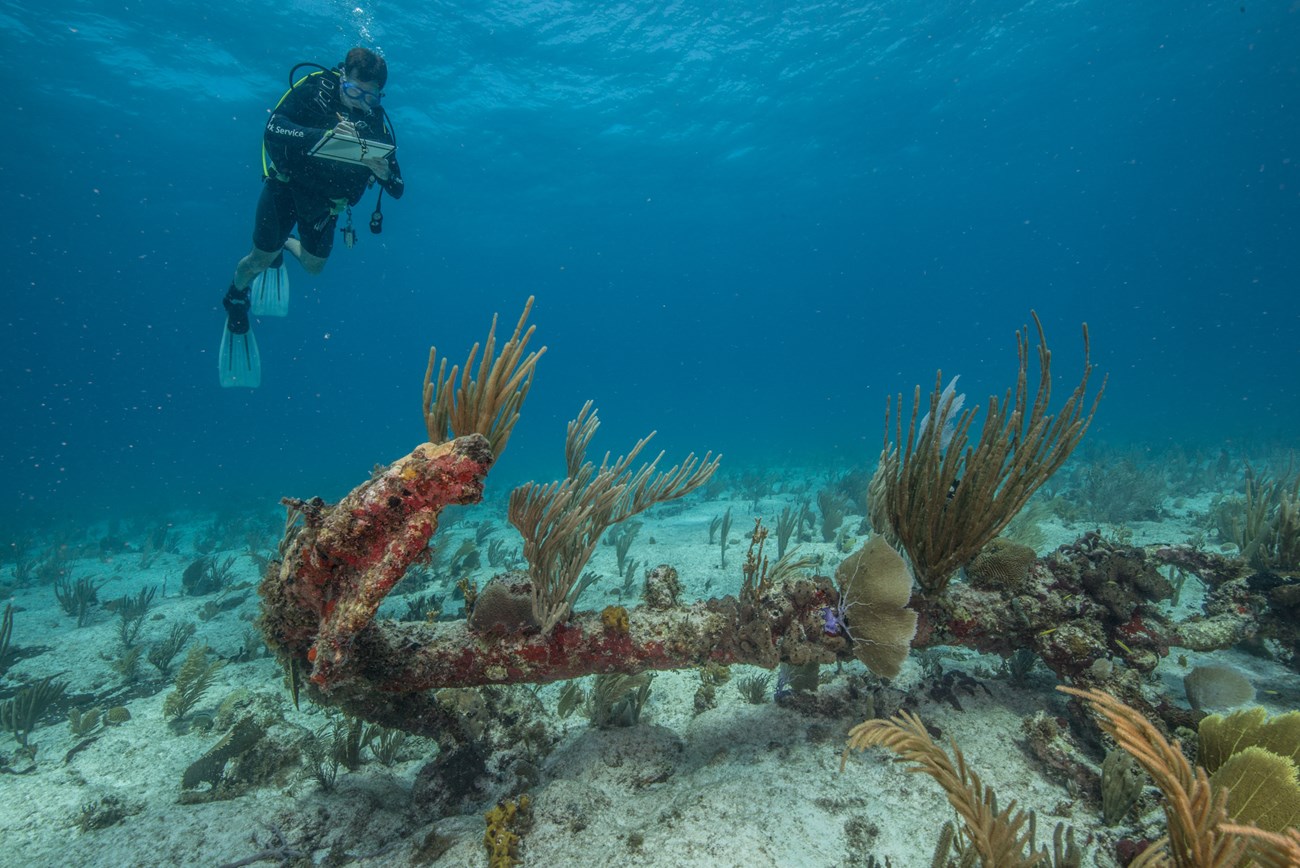
NPS / Susanna Pershern
So, whether you decide to come visit America’s paradise on your next vacation or business trip, be sure to find your way to Buck Island. If you prefer to snorkel or SCUBA dive through one of the Caribbean’s finest intact coral reefs, hike the trail over the island to the observation platform for a view of the reef and the Virgin Islands to the north, or simply lounge and sunbathe on the coral sand beaches and relax in turquoise of tropical waters, Buck Island Reef National Monument will not disappoint.
Christiansted National Historic Site serves as the main visitor contact location for the three national park locations on St. Croix, including Buck Island Reef National Monument. It is located in the heart of Christiansted roughly 9 miles (14 kilometers) from Henry E. Rohlsen Airport. Parking is free to park visitors from 8:30 am to 4:30 pm daily.
Buck Island Reef National Monument is open year-round. An anchoring permit is required for any vessel visiting the monument, and anchoring is only allowed in the designated anchoring area off West Beach. Vessel lights and sounds must be kept to a minimum because bright lights and loud noises can disorient sea turtles, other nocturnal animals, and birds. The island is closed after 6 pm, and overnight anchoring requires a permit. Remember, Buck Island Reef National Monument is a marine protected area. Visitors are not allowed to remove anything from the monument, including rocks, shells, plants, and artifacts. Fishing and collecting activities are prohibited throughout the entire monument.
The National Park Getaways series helps people find new places to connect with nature, history, family, and friends. Explore more than 400 unique national parks across the country sharing the nation's diverse natural and cultural heritage and recreational opportunities.
